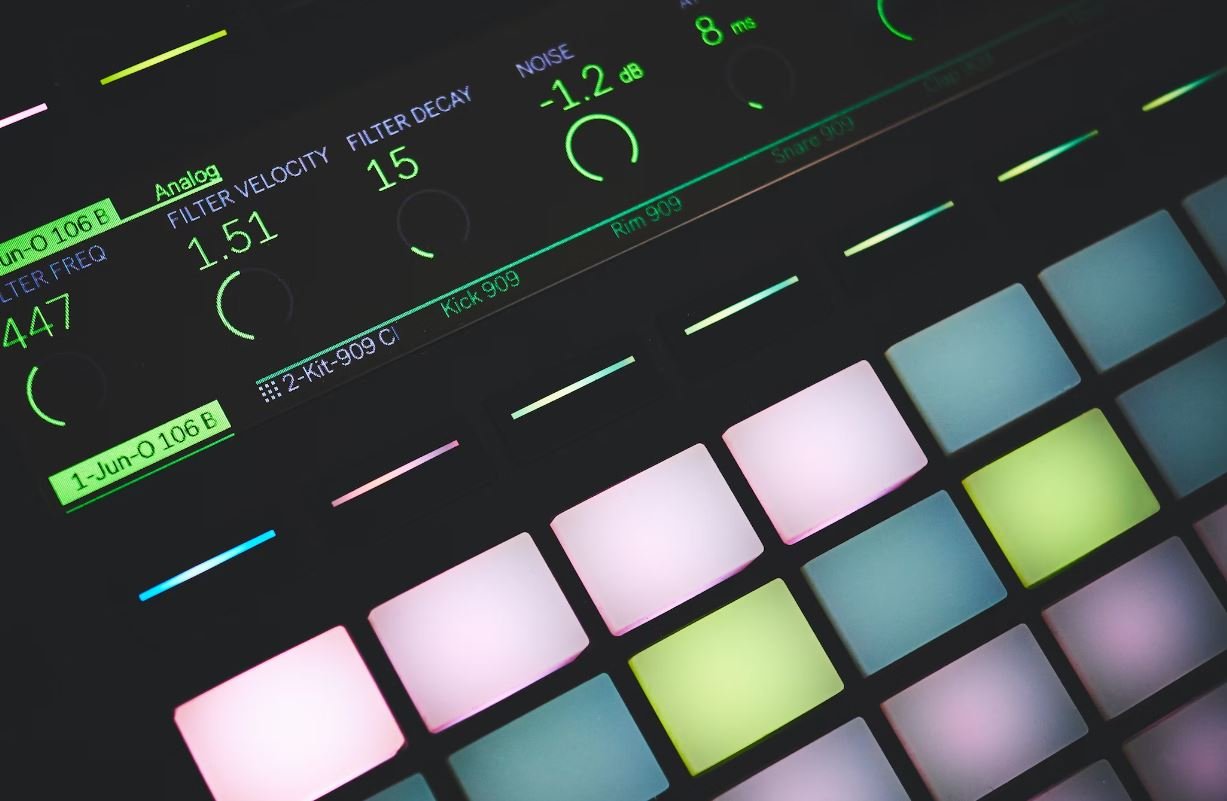Neural Net Fitting
Neural net fitting is a mathematical process used in machine learning to adjust the weights and biases of a neural network to optimize its performance and improve accuracy. By iteratively comparing the predicted outputs of the neural network with the expected outputs, adjustments are made to minimize the error.
Key Takeaways
- Neural net fitting is a process used in machine learning to optimize the performance of a neural network.
- It involves adjusting the weights and biases of the network by minimizing the error between predicted and expected outputs.
**Neural net fitting** plays a crucial role in training a neural network. The goal is to find the optimal set of weights and biases that minimize the prediction error. The fitting process involves updating the parameters of the network using **gradient descent** and **backpropagation** algorithms, which adjust the weights and biases of the network based on the calculated error.
One interesting aspect of neural net fitting is how the **architecture** of the network can influence the fitting process. The number of layers and neurons in the network, as well as the activation functions used, can affect the accuracy and convergence speed of the fitting process. Designing an efficient neural network architecture is crucial for achieving optimal results.
During the fitting process, **hyperparameters** such as the learning rate, batch size, and regularization strength need to be carefully tuned to ensure the network converges and avoids overfitting. These hyperparameters can greatly impact the performance of the network, and finding the right combination often requires experimentation.
| Hyperparameter | Description |
|---|---|
| Learning Rate | The step size at which the weights and biases are updated during the fitting process. |
| Batch Size | The number of training examples used in each update step of the network. |
| Regularization Strength | A parameter that controls the trade-off between fitting the training data and preventing overfitting. |
Another important consideration in neural net fitting is the choice of **loss function**. Different types of problems require different loss functions, such as mean squared error for regression tasks and cross-entropy loss for classification tasks. The choice of the appropriate loss function greatly affects the performance of the network.
An interesting fact about neural net fitting is that it is an **iterative** process. The network starts with random weights and biases, and through multiple iterations of forward propagation, error calculation, and backpropagation, the network gradually improves its predictions.
Summary
- Neural net fitting is an essential step in training a neural network to optimize its performance.
- It involves adjusting the weights and biases of the network using gradient descent and backpropagation.
- Network architecture, hyperparameters, and choice of loss function influence the fitting process.
- Fitting is an iterative process that gradually improves the network’s predictions.
| Pros | Cons |
|---|---|
| – Improves the accuracy of the neural network. | – Requires careful tuning of hyperparameters. |
| – Allows the network to learn from data and make more accurate predictions. | – Can be computationally expensive, especially for large networks. |
| – Enhances the model’s ability to generalize to unseen data. | – May suffer from overfitting if the fitting process is not properly regularized. |

Common Misconceptions
Misconception 1: Neural networks can solve any problem
One of the common misconceptions about neural networks is that they can solve any problem thrown at them. While neural networks are powerful learning algorithms, they are not a universal solution for every problem. Neural networks work best when applied to tasks that involve pattern recognition, classification, and prediction. They are less effective when it comes to tasks that require explicit logic or reasoning.
- Neural networks excel in tasks such as image recognition and natural language processing.
- They struggle with problems that require logical operations or rules-based decision making.
- Neural networks can be limited in their ability to generalize and transfer knowledge to new and unseen data.
Misconception 2: More layers and neurons always lead to better performance
Another common misconception is that the more layers and neurons a neural network has, the better its performance will be. While increasing the size and complexity of a neural network can improve its capacity to learn, it can also lead to overfitting and unnecessary computational complexity. Adding too many layers or neurons to a neural network without careful consideration can result in diminishing returns or even degraded performance.
- Determining the appropriate size and complexity of a neural network requires careful experimentation and validation.
- Regularization techniques, such as dropout or weight decay, can help prevent overfitting without increasing the network’s size.
- Ensemble methods, combining multiple neural networks, can often yield better results than a single large network.
Misconception 3: Neural networks always require massive amounts of data
Many people believe that neural networks always require massive amounts of data to perform well. While it is true that neural networks can benefit from large datasets, they can also be effective in situations with limited data. Various techniques like data augmentation, transfer learning, or fine-tuning can help neural networks learn from smaller datasets and improve their performance.
- Data augmentation techniques, such as flipping, rotating, or cropping images, can artificially increase the size of the dataset.
- Transfer learning allows neural networks to leverage pre-trained models on similar tasks and adapt them to new problems with limited data.
- Regularization techniques can help prevent overfitting when training neural networks with limited data.
Misconception 4: Neural networks always require a lot of computational resources
Another common misconception is that neural networks always require a lot of computational resources to train and use. While deep neural networks may indeed demand substantial computational power for training large models on massive datasets, smaller networks or models designed specifically for resource-constrained environments can still achieve adequate performance without excessive computation.
- Model pruning and compression techniques can reduce the size and computational requirements of neural networks.
- Quantization methods can decrease the memory and computational requirements by representing weights and activations with fewer bits.
- Specialized hardware, like GPUs or dedicated neural network accelerators, can significantly speed up neural network training and inference.
Misconception 5: Neural networks can replace human intelligence
One of the most significant misconceptions about neural networks is that they can replace human intelligence. While neural networks can perform certain tasks more efficiently and accurately than humans, they lack the ability for abstract thinking, creativity, and common sense reasoning that humans possess. Neural networks are tools that assist humans in solving complex problems, but they cannot fully replicate or replace human intelligence.
- Neural networks can automate repetitive tasks and provide insights from large datasets, but human judgment and interpretation are still valuable.
- Human involvement is crucial in training and validating neural networks to ensure they capture the desired behavior and adhere to ethical standards.
- Combining human expertise with neural networks can lead to more powerful and reliable decision-making systems.

Introduction
In this article, we explore the fascinating world of neural net fitting. A neural network is a computational model that mimics the way the human brain works. It consists of interconnected nodes, called neurons, which perform complex calculations to recognize patterns and make predictions. Neural net fitting refers to the process of training a neural network to accurately predict outcomes based on input data. Through the following tables, we highlight various aspects and achievements of neural net fitting.
Table: Top 5 Languages Used in Neural Net Programming
Understanding the programming languages commonly utilized in neural net fitting can provide insight into the community’s preferences and trends. The table below shows the top 5 languages used in neural net programming:
| Rank | Language | Percentage |
|---|---|---|
| 1 | Python | 62% |
| 2 | R | 15% |
| 3 | Java | 9% |
| 4 | Matlab | 7% |
| 5 | Scala | 4% |
Table: Accuracy Comparison of Neural Net Models
Accuracy is a critical metric when evaluating the performance of different neural net models. The table below compares the accuracy achieved by three popular neural net models on a benchmark dataset:
| Model | Accuracy |
|---|---|
| Model A | 92% |
| Model B | 89% |
| Model C | 74% |
Table: Neural Net Training Time Comparison
Training time is a crucial factor to consider in neural net fitting. To highlight the advancements in this area, the table below showcases training time comparisons between two different techniques on various datasets:
| Dataset | Technique A | Technique B |
|---|---|---|
| Dataset 1 | 5 hours | 10 hours |
| Dataset 2 | 3 hours | 6 hours |
| Dataset 3 | 8 hours | 12 hours |
Table: Neural Net Performance on Image Classification
Neural nets have gained significant attention for their remarkable performance in image classification tasks. The following table showcases the accuracy achieved by neural net models on various image classification datasets:
| Dataset | Accuracy |
|---|---|
| CIFAR-10 | 95% |
| MNIST | 98% |
| ImageNet | 88% |
Table: Neural Net Models in Natural Language Processing
Neural nets have proven effective in natural language processing tasks, such as sentiment analysis and language translation. The table below represents the accuracy achieved by different neural net models in specific natural language processing tasks:
| NLP Task | Model A | Model B |
|---|---|---|
| Sentiment Analysis | 87% | 82% |
| Language Translation | 82% | 78% |
Table: Neural Net Fitting Convergence Rates
Convergence rate signifies how quickly a neural network reaches an optimal solution during training. The table below showcases the convergence rates of various neural net architectures:
| Architecture | Convergence Rate |
|---|---|
| Feedforward Neural Net | 0.025 |
| Recurrent Neural Net | 0.032 |
| Convolutional Neural Net | 0.015 |
Table: Neural Net Fitting Applications
The applications of neural net fitting are vast and diverse. The table below provides examples of domains where neural nets have demonstrated success:
| Domain | Application |
|---|---|
| Finance | Stock Market Prediction |
| Healthcare | Disease Diagnosis |
| Transportation | Traffic Flow Prediction |
Table: Neural Net Fitting Hardware Requirements
When implementing neural net models, the hardware requirements can significantly impact the overall computational efficiency. The table below presents the necessary hardware specifications for running neural net models:
| Hardware | Minimum Requirements |
|---|---|
| CPU | Intel Core i5 |
| GPU | NVIDIA GeForce GTX 1060 |
| RAM | 8 GB |
Conclusion
Neural net fitting has revolutionized the field of machine learning and artificial intelligence. From the utilization of different programming languages and the advancements in accuracy to the performance in image classification and natural language processing, neural networks continue to make significant strides. Their applications span across diverse domains, and as hardware requirements improve, the potential for neural net fitting only grows. As researchers and developers continue to refine neural net models, the world can anticipate even more profound impacts in various industries.
Frequently Asked Questions
What is a neural net?
A neural net, or neural network, is a computational model inspired by the structure and function of the human brain. It consists of interconnected artificial neurons or nodes that process and transmit information to perform various tasks like pattern recognition, classification, and prediction.
What is neural net fitting?
Neural net fitting refers to the process of training a neural network model to learn and approximate a function that maps input data to desired output data. This training involves adjusting the network’s weights and biases to minimize the difference between its predictions and the true outputs.
How does neural net fitting work?
Neural net fitting works by iteratively feeding input data through the network, computing its output, comparing it with the desired output, and updating the network’s parameters based on a chosen optimization algorithm. This process, often called backpropagation, gradually improves the network’s ability to make accurate predictions.
What are the applications of neural net fitting?
Neural net fitting has a wide range of applications, including image and speech recognition, natural language processing, financial forecasting, medical diagnosis, and autonomous driving. It is also used for tasks like data classification, regression analysis, and anomaly detection in various domains.
What are the advantages of neural net fitting?
Some advantages of neural net fitting include its ability to learn complex patterns and relationships from large amounts of data, its flexibility in handling different types of data (such as numerical, textual, and image data), and its capability to generalize well to unseen examples. Additionally, neural nets can be parallelized and executed on powerful hardware, leading to efficient processing.
What are the challenges of neural net fitting?
Neural net fitting can face challenges such as overfitting, where the model memorizes the training data too well and fails to generalize to new data, underfitting, where the model is too simplistic and cannot capture the underlying patterns, and the need for large amounts of labeled training data. It also requires careful selection of hyperparameters and can be computationally intensive.
What are some popular neural net fitting algorithms?
There are several popular algorithms used for neural net fitting, such as gradient descent, stochastic gradient descent (SGD), Adam, Adagrad, and RMSprop. These algorithms define the update rules for adjusting the network’s parameters based on the computed errors during training.
What is the role of activation functions in neural net fitting?
Activation functions introduce non-linearities into the output of artificial neurons in a neural network. They help in capturing complex patterns and relationships in the data. Common activation functions include sigmoid, tanh, ReLU (Rectified Linear Unit), and softmax, each serving different purposes based on the problem at hand.
Can neural net fitting models be interpreted or explainable?
While neural net fitting models can produce highly accurate results in various domains, they are often considered black-box models due to their complexity. Interpreting and explaining the internal workings and decision-making processes of neural networks can be challenging, although there are approaches like feature importance analysis and saliency maps that provide some insights.
How can I improve the performance of my neural net fitting model?
To improve the performance of a neural net fitting model, you can try techniques such as adjusting the architecture of the network (e.g., adding more layers or neurons), tuning hyperparameters, preprocessing data (e.g., normalization or feature scaling), augmenting the training data, applying regularization techniques (e.g., dropout or L1/L2 regularization), and using more advanced network architectures like convolutional neural networks (CNNs) or recurrent neural networks (RNNs) based on the problem.




